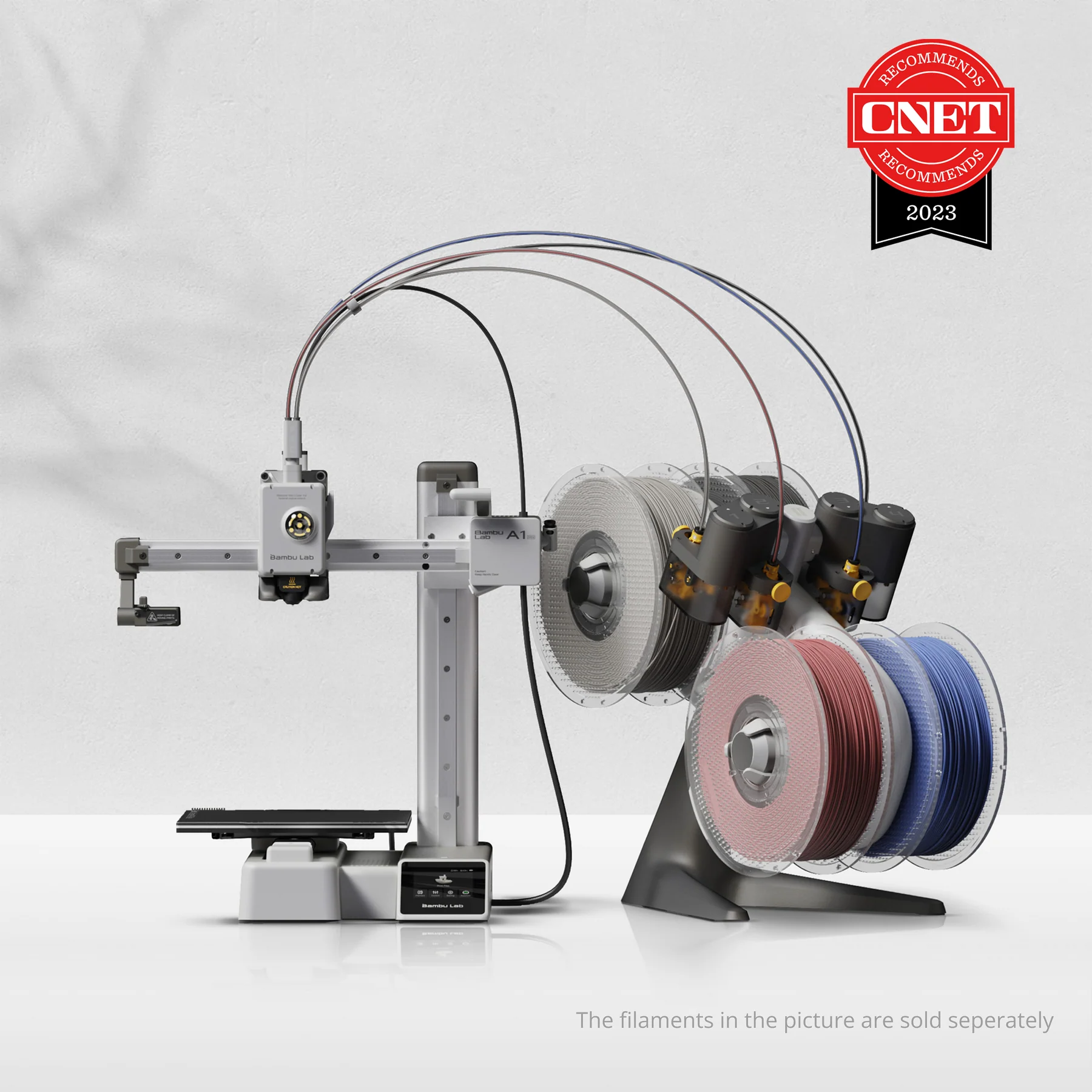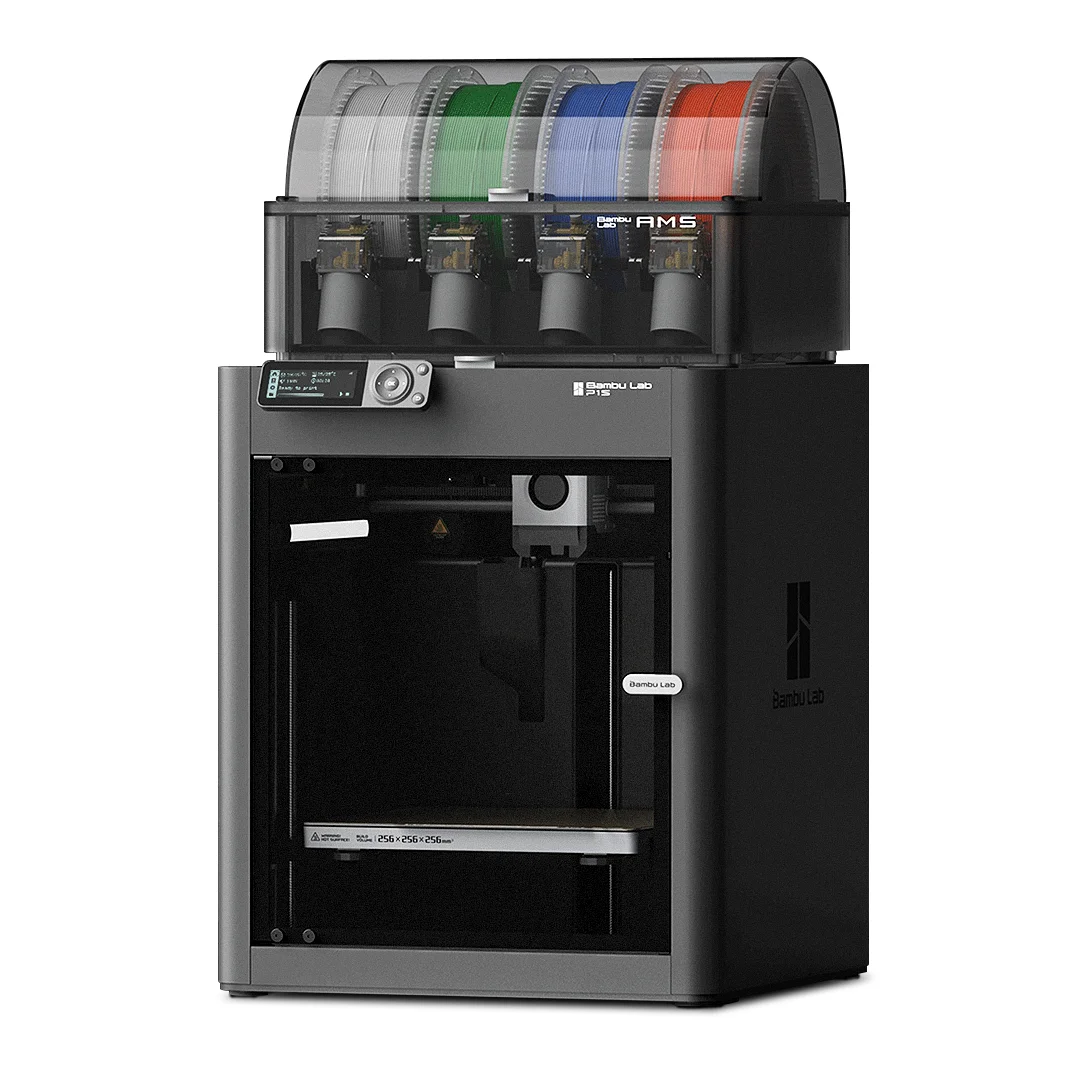Compare A1 Mini vs P1S
Comparison between the best 3D printers
Choose the best 3D printer at the best price. The cheapest 3D printers are here.
Buy a 3D printer here with 3D Fila.
 |
 |
|
| Model | A1 Mini |
P1S[BUY P1S] |
| Printing Material | Filament | Filament |
| Buy Filament for Bambu Lab A1 Mini | Buy Filament forBambu Lab P1S | |
| Estimated price | $549,00 | $949,00 |
| Manufacturer | Bambu Lab | Bambu Lab |
| Release Year | 2023 | 2023 |
| Print Volume [mm] | 180x180x180 | 256x256x256 |
| Printer Size [mm] | 315x347x365 | 389x389x458 |
| Weight [kg] | 5,5 | 12,95 |
| Power Loss Recovery | YES | YES |
| Enclosed printer | NO | YES |
| Bed Leveling | Automatic | Automatic |
| Filament End Sensor | YES | YES |
| Bed type | Heated | Heated |
| Power supply system | Direct Drive | Direct Drive |
| Standard nozzle | 0,4 | 0,4 |
| Maximum Nozzle Temperature [°C] | 300 | 300 |
| Maximum Bed Temperature [°C] | 80 | 100 |
| Maximum printing speed [mm/s] | 500 | 500 |
| Filament holder | YES | YES |
| Camera for supervision | YES | YES |
| Recommended filaments | PLA, PETG, TPU, PVA | PLA, PETG, TPU, PVA, PA, PA-CF, Nylon, PC |
| Recommended slicers | Bambu Studio, Super Slicer, Cura, Prusa Slicer, Orca | Bambu Studio, Super Slicer, Cura, Prusa Slicer, Orca |
| Maximum Resolution [mm] | 0,1 | 0,1 |
| Processor | 32-bit Silenciosa | Quad ARM A7 1.2 GHz |
| Display | Touchscreen 2,4'' | Touchscreen 5'' |
| Power Supply | 150 W | 350 W |
| Connectivity | Wifi, Bambu bus, Cartão SD | Wifi, Bambu bus, Cartão SD |
| Operating systems | Windows, Linux, Macbook | Windows, Linux, Macbook |
| Date of registration in the system | 2024-04-10 | 2024-04-11 |
| Release date | 2023 | 2023 |
| Extra features | The Bambu Lab A1 Mini stands out not only for its impressive speed and automatic calibration, but also for its multi-color printing capability thanks to AMS Lite. This innovative system makes multi-color printing easy, making it accessible to everyone. AMS Lite, specific to the A1 Mini, supports up to four different materials simultaneously, providing creative freedom without complications. With comprehensive sensors for energy monitoring and recovery, a camera for timelapses and Wi-Fi control, the A1 Mini and AMS Lite together offer an intuitive and advanced 3D printing experience, ideal for materials such as PLA, PETG and TPU, and designed for simplicity and fast maintenance with quick-change nozzles. | The Bambu Lab P1S stands out for its out-of-the-box practicality, eliminating the need for manual adjustments with automatic calibrations such as bed leveling and vibration compensation. It features multicolor printing capability through the AMS system, allowing up to 16 colors when connecting four AMS units. With an advanced control algorithm, the P1S offers fast printing speeds without sacrificing quality. Equipped with modern features such as filament end sensor, semi-automatic belt tension, direct extruder, welded frame and all-metal hotend, along with a fully enclosed chamber, the P1S promotes a superior printing experience, supporting a wide range of materials. |
| Support for multiple colors and materials (AMS and CFS) | YES | YES |
Notes * |
||
| Cost-benefit | 7 / 10 | 7 / 10 |
| Hardware | 4.2 / 10 | 5.6 / 10 |
| Tela | . | . |
| Print volume | 3 / 10 | 4 / 10 |
| Performance | 4 / 10 | 4 / 10 |
| [BUY P1S] |
Conclusion |
| In comparing the Bambu Lab A1 Mini and the Bambu Lab P1S, both 3D printers excel in various aspects, but the best choice ultimately depends on the user’s specific needs and budget. The Bambu Lab A1 Mini, with its lighter weight and more compact design, is ideal for those seeking an affordable option that still delivers impressive speed and functionality. Its innovative AMS Lite system allows for multi-color printing and is user-friendly, making it accessible for beginners or those with limited space. The A1 Mini also supports a range of common filaments, ensuring versatility for general projects. On the other hand, the Bambu Lab P1S offers a more robust set of features and higher print volume capabilities, making it more suitable for advanced users or professionals. Its fully enclosed design, advanced calibration features, and support for a wider range of materials, including nylon and PC, provide enhanced printing possibilities. The larger touchscreen display and semi-automatic belt tensioning are additional benefits that improve user experience and operational efficiency. While the A1 Mini is an excellent cost-effective choice for beginners, the P1S justifies its higher price with superior performance, material compatibility, and ease of use for more complex printing tasks. Ultimately, the decision hinges on whether cost efficiency or advanced features and capacity are the priority for the buyer. |

